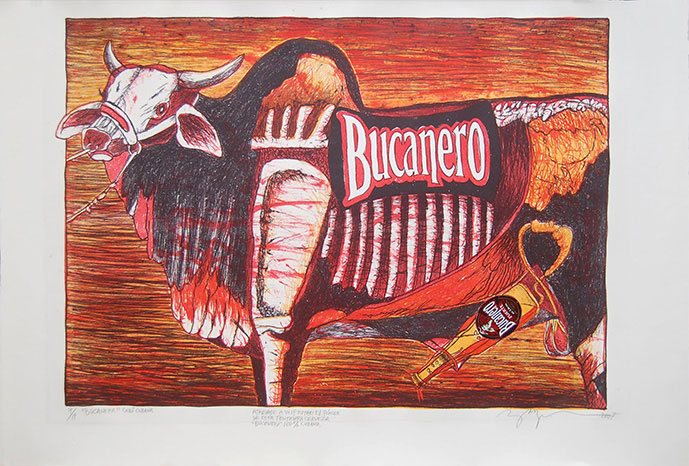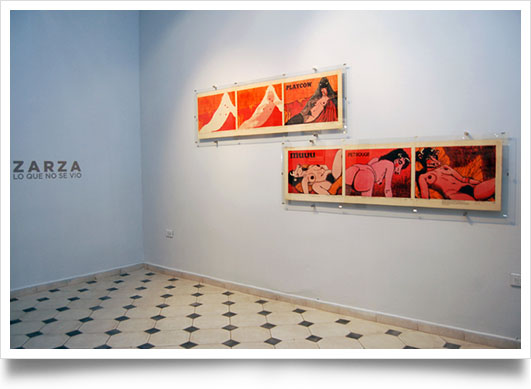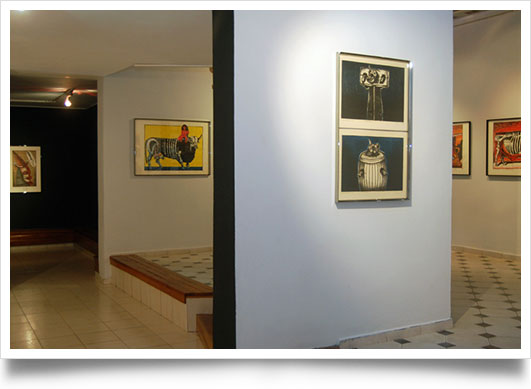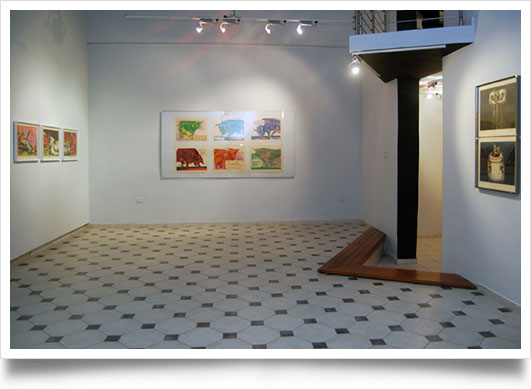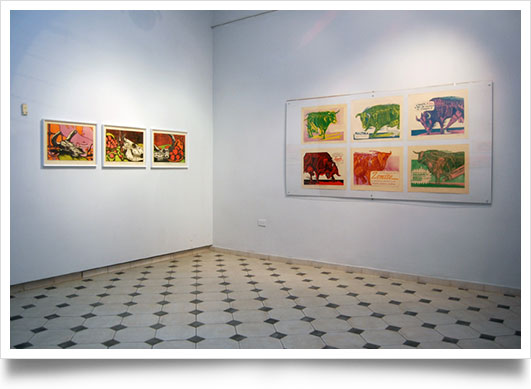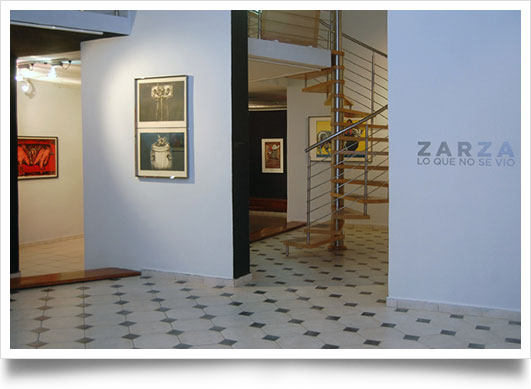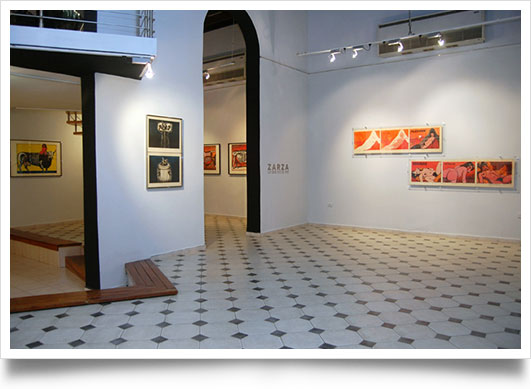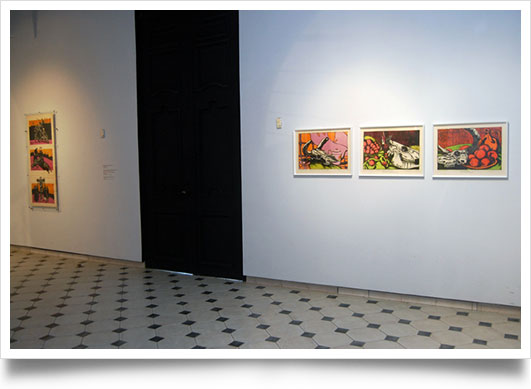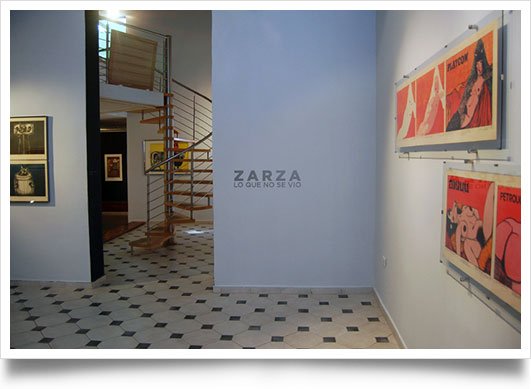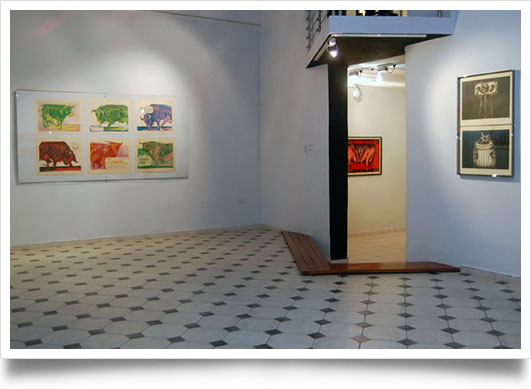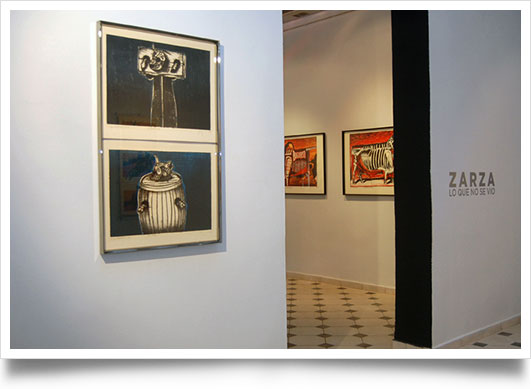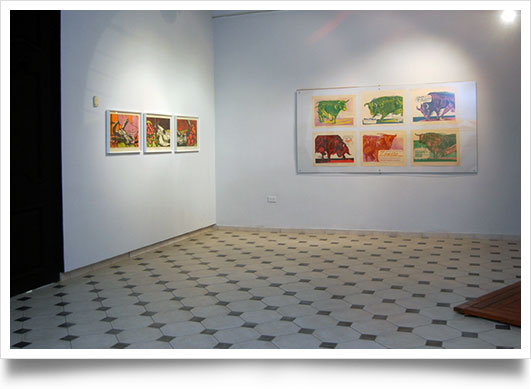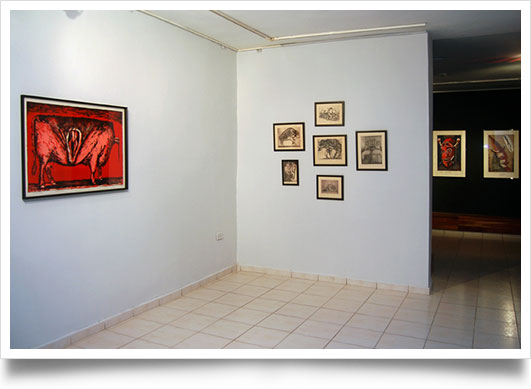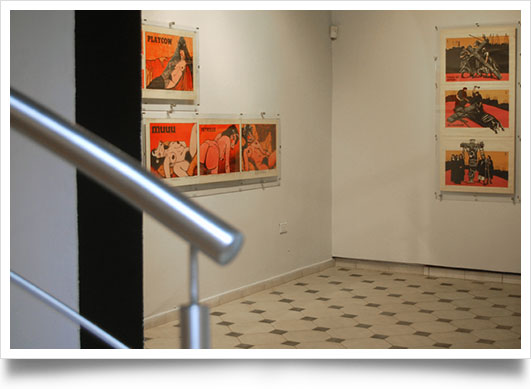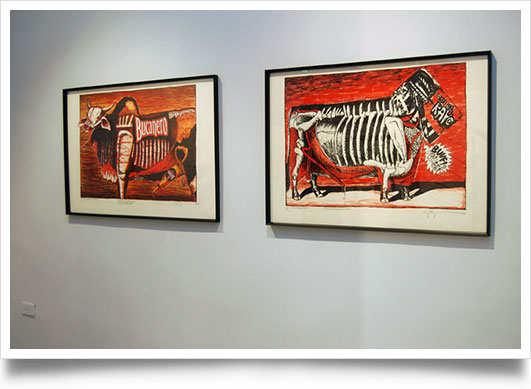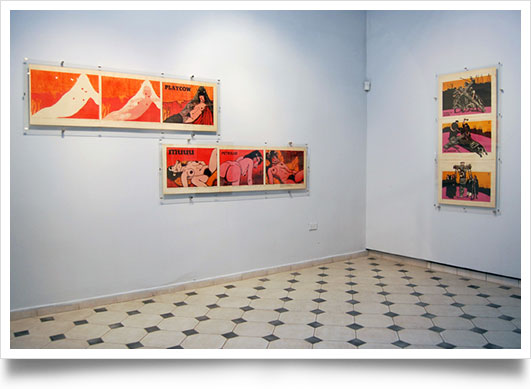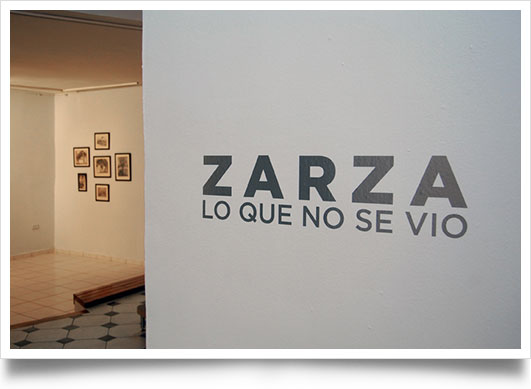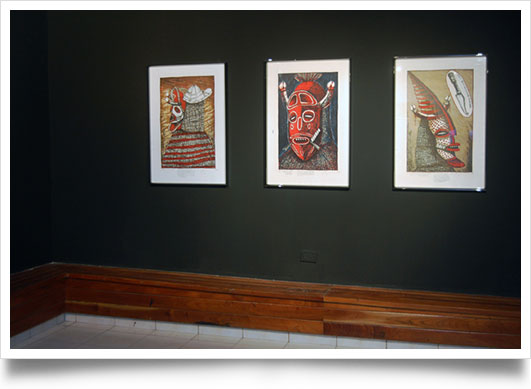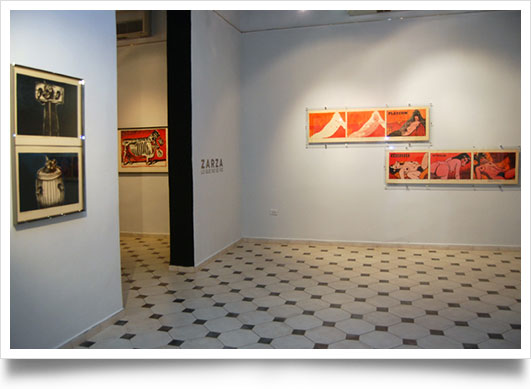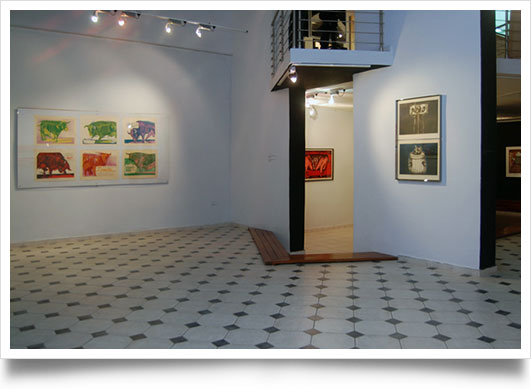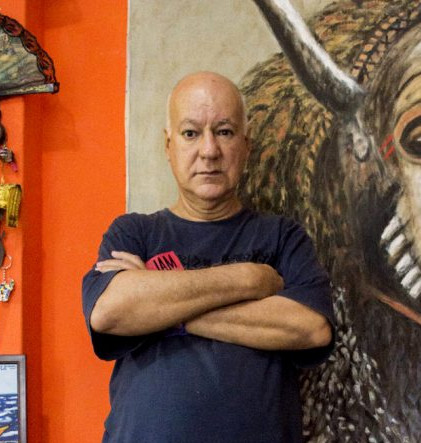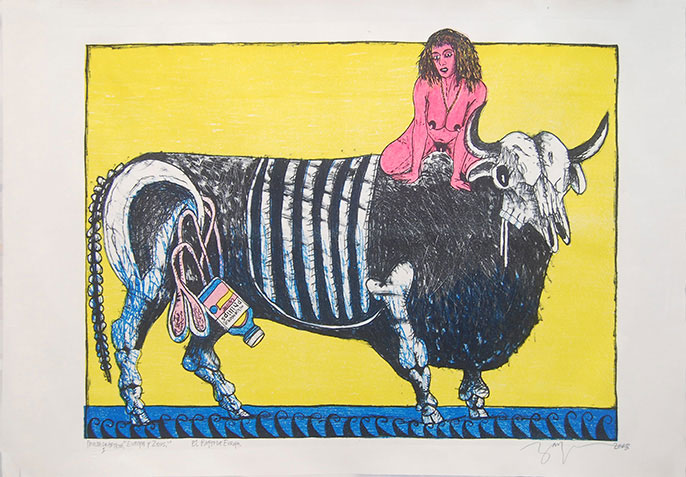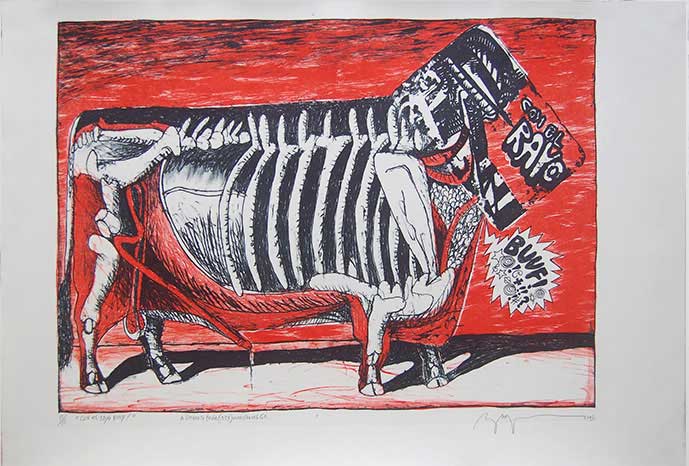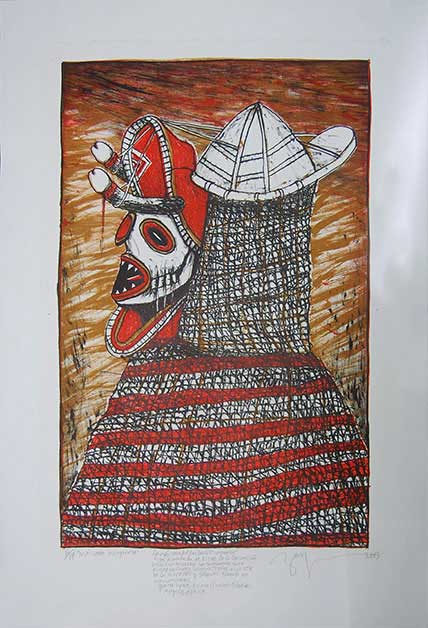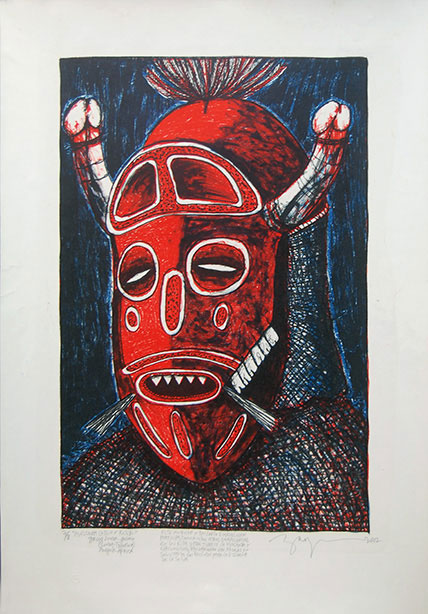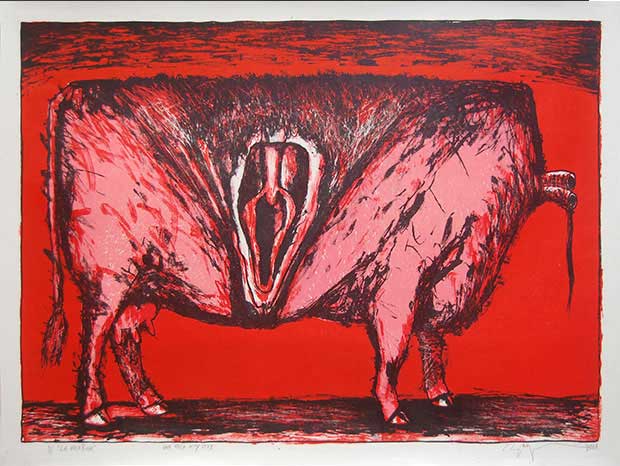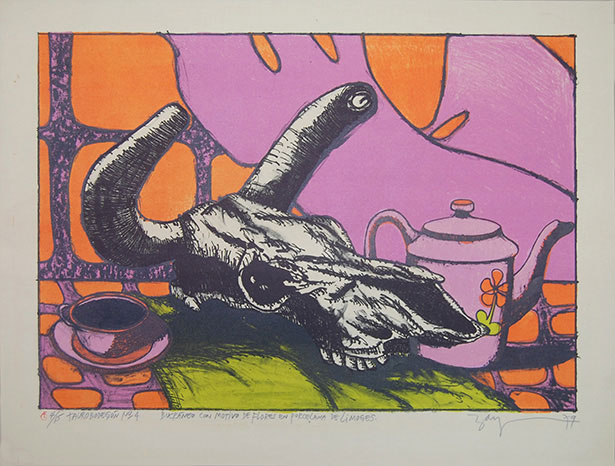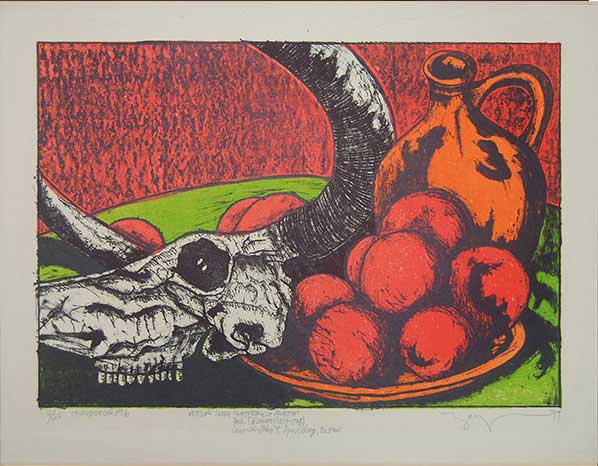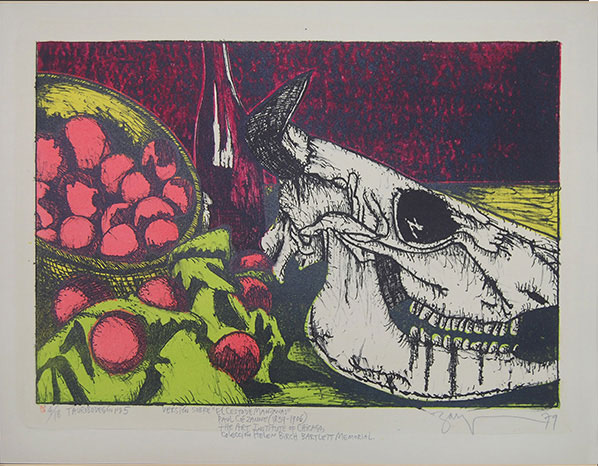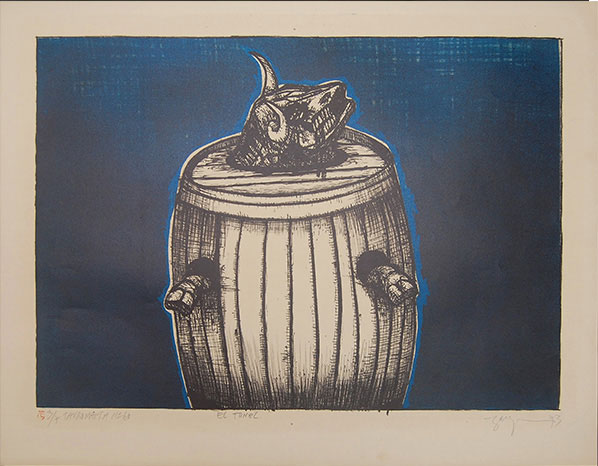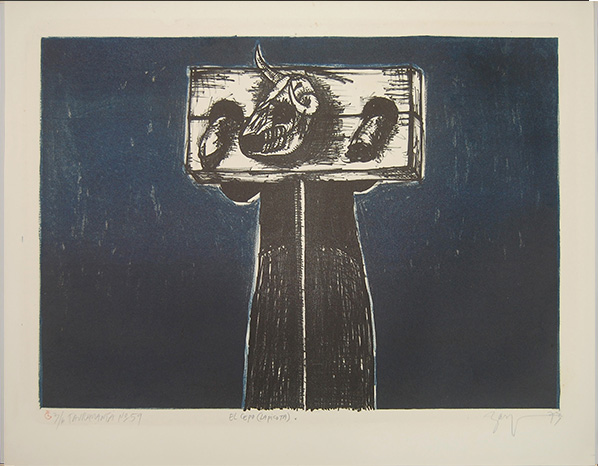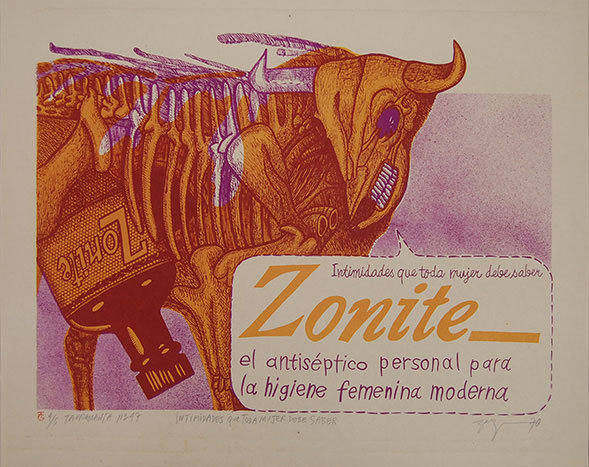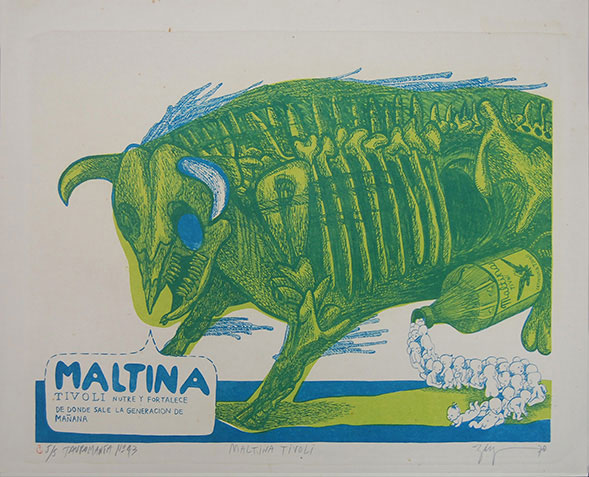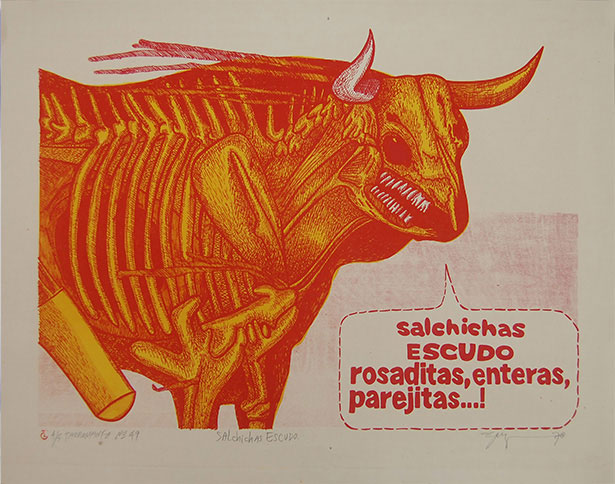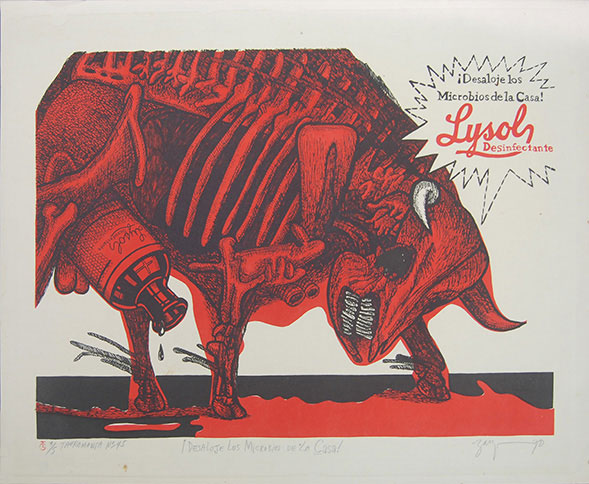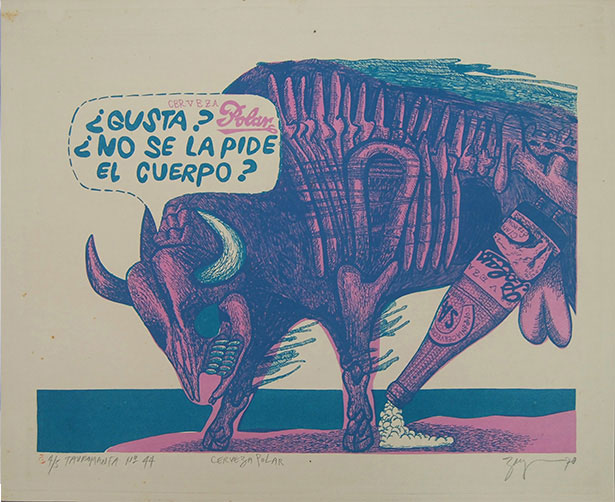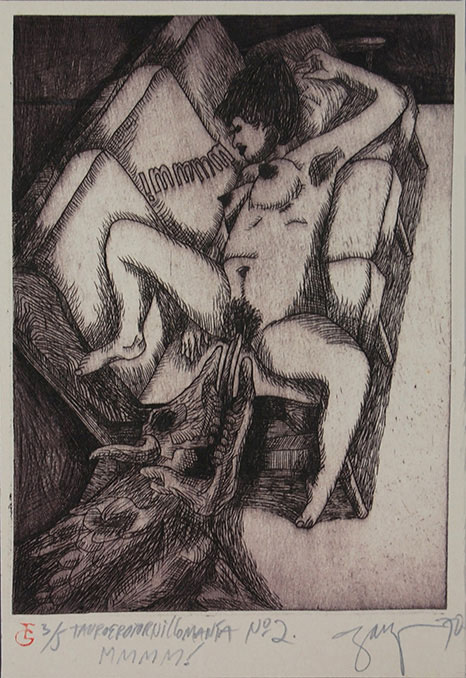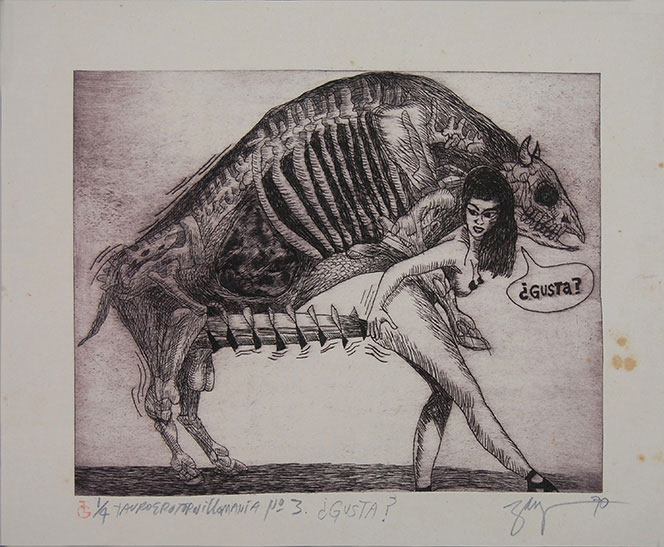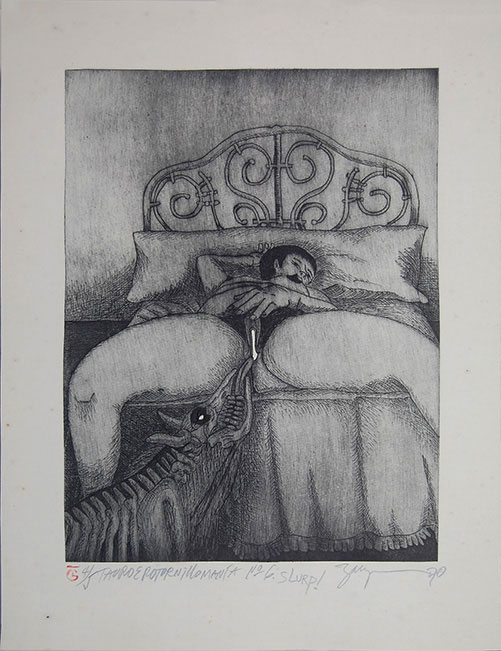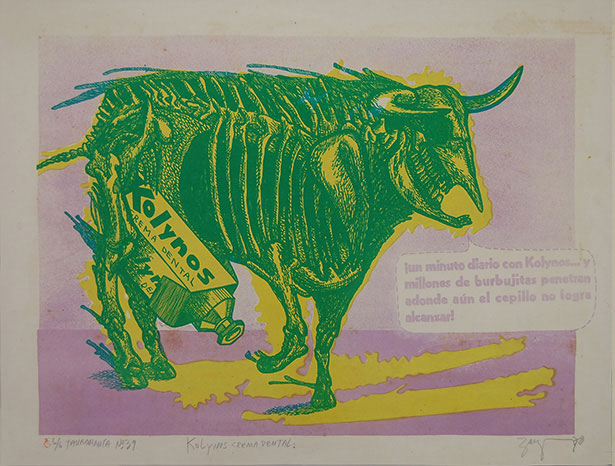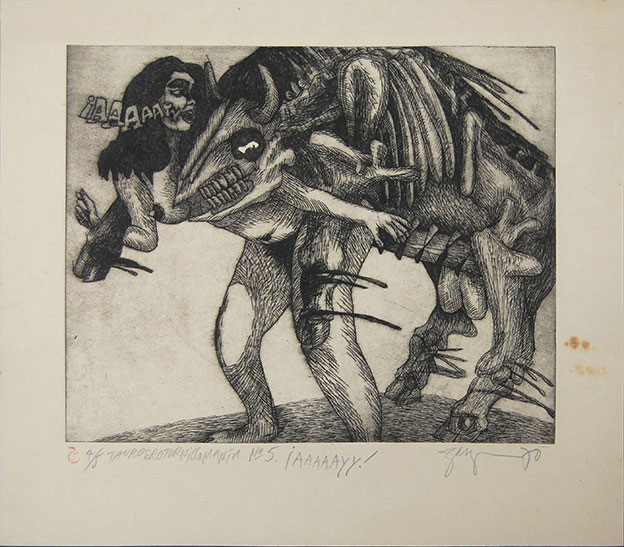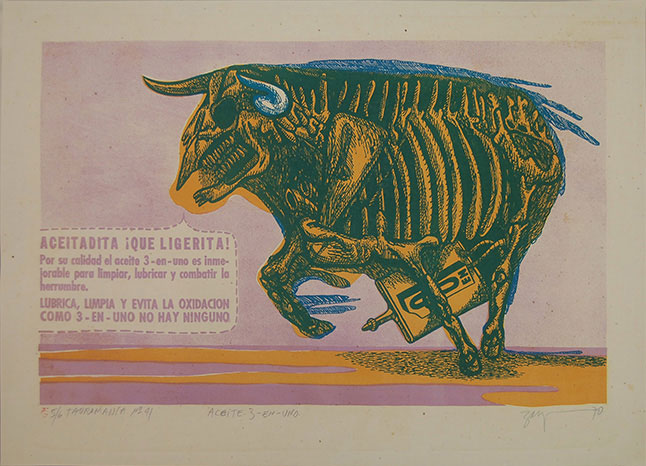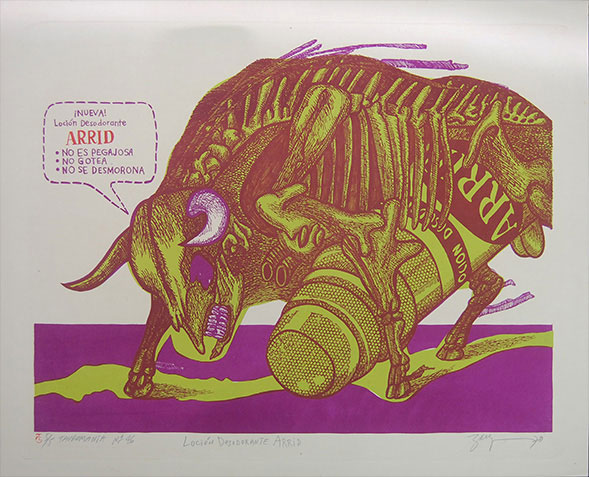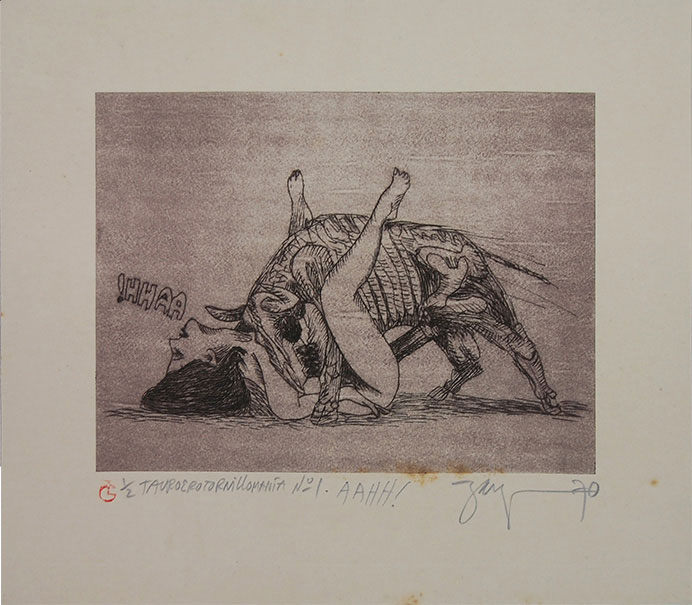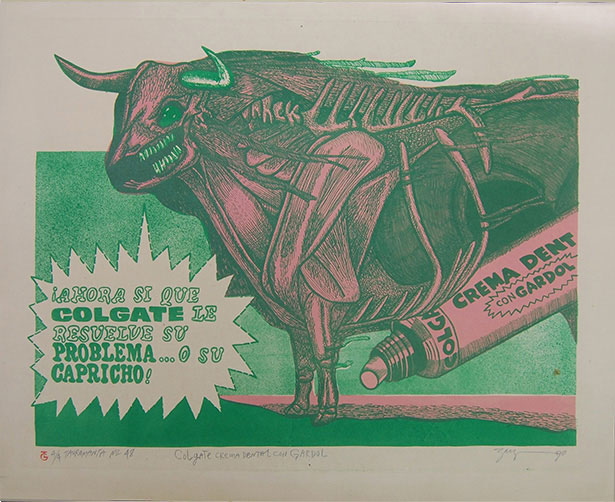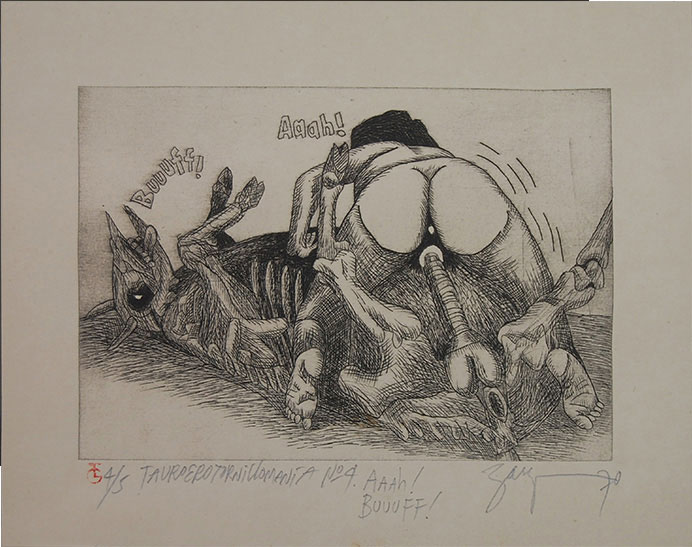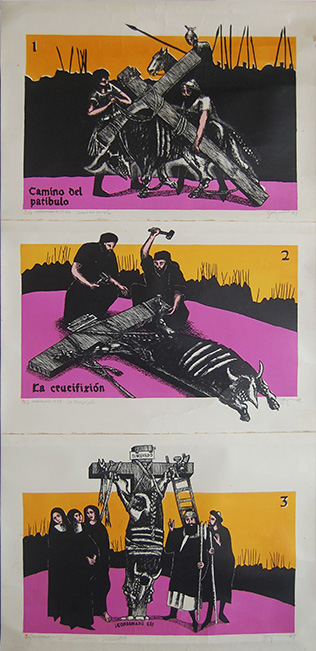Zarza, which was not seen
Zarza, lo que no se vió
I recommend to those who may be interested in seeing Zarza’s works in his studio, in direct contact with the original and not from the cold, though so effective process of the digital dossier, to go with enough time. Time to dust off, literally and metaphorically, not only that almost infinite number of printed light cardboards, but also the stories contained in each one of them. Technical explorations, divertimentos, prizes and obstacles, international and national expositions; it is probably only the summary of the story that the pieces can tell us. His seventy years have not tamed that restless spirit, and still today it is possible to perceive his enthusiasm when he is preparing a new piece, as if it were the first time.
And it is because of that very enthusiasm, of that staunch commitment to the work of art that we owe him a substantial balance that, undoubtedly, has set a landmark in graphics and in the artistic production in general of our country. That is why Zarza deserves an exposition that may -perhaps- reward a long and fruitful career in the sphere of lithography, the technique he has most frequently worked with, although in recent years he has preferred the brush instead of the stone. Given the volume of his work and the objective spatial circumstances it is not possible to speak of an anthological showcase, not even, I dare say, of a retrospective one, even though it may include pieces from a large part of his different creative moments. In this case it would rather be a group of works confirming to us his value as an artist and, above all, that would oppose historical amnesia and evidence that engraving is an art form with ample expressive possibilities.
The exposition is a unique tribute, since regardless of being an acknowledgment to his work, it would seem to also be honoring others in a kind of subliminal message, due to the fact that the majority of the selected pieces are linked to works, authors and trends in the history of Cuban and universal art. One could say then that it is the intertext that is used as common denominator, expressed in the ironical commentary, the quotation, the pastiche; elements that define his work. It is possible to identify his authors of cult like Goya, Umberto Peña, Cézanne, although we may miss Rembrandt, Toulouse Lautrec and Van Gogh. His visuality is aggressive, brutal, in some cases almost grotesque, to remind us of Bacon at times. Besides, his point of view on eroticism, which could not be less than incisive, like the rest of his paintings and engravings, is very interesting. He avails himself of mockery and double meaning, openly recognizable in the series where he takes the advertisements from the 50’s as starting point.
Zarza has been a daring artist in every sense, both in form and content. He has turned his obsession for the bullfighting universe into works that tell, like chronicles, about the times he has lived through, but also, and this is the most important, they are a reflection about the Cuban identity.
Artworks
Europe and Zeus, Europe's kidnap
Rafael Zarza 2008With lightning, buff, to Umberto Peña 1937, master of the 60
Rafael Zarza 2003Munguenda mask
Rafael Zarza 2003CatoiorKatoyo mask
Rafael Zarza 2002Txicunza mask from the Tshokwes country
Rafael Zarza 2002From the series Taurobodegón
Rafael Zarza 1979Artist's proof "playcow number one"
Rafael Zarza 1979From the series Taurobodegón
Rafael Zarza 1979From the series Tauromanía
Rafael Zarza 1973From the series Tauromanía
Rafael Zarza 1973From the seriesTauromanía
Rafael Zarza 1970From the series Tauromanía
Rafael Zarza 1970From the series Tauromanía
Rafael Zarza 1970From the series Tauromanía
Rafael Zarza 1970From the series Tauromanía
Rafael Zarza 1970From the series Tauroerotornillomanía
Rafael Zarza 1970From the series Tauroerotornillomanía
Rafael Zarza 1970From the series Tauroerotornillomanía
Rafael Zarza 1970De la Serie Tauromanía
Rafael Zarza 1970From the series Tauroerotornillomanía
Rafael Zarza 1970From the series Tauromanía
Rafael Zarza 1970From the series Tauromanía
Rafael Zarza 1970From the series Tauroerotornillomanía
Rafael Zarza 1970From the series Tauromanía
Rafael Zarza 1970From the series Tauroerotornillomanía
Rafael Zarza 1970De la Serie Tauromanía
Rafael Zarza 1969Artists
